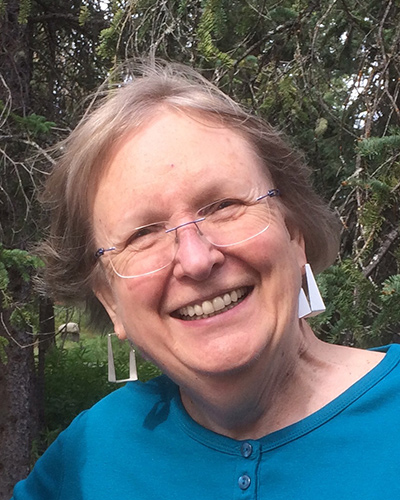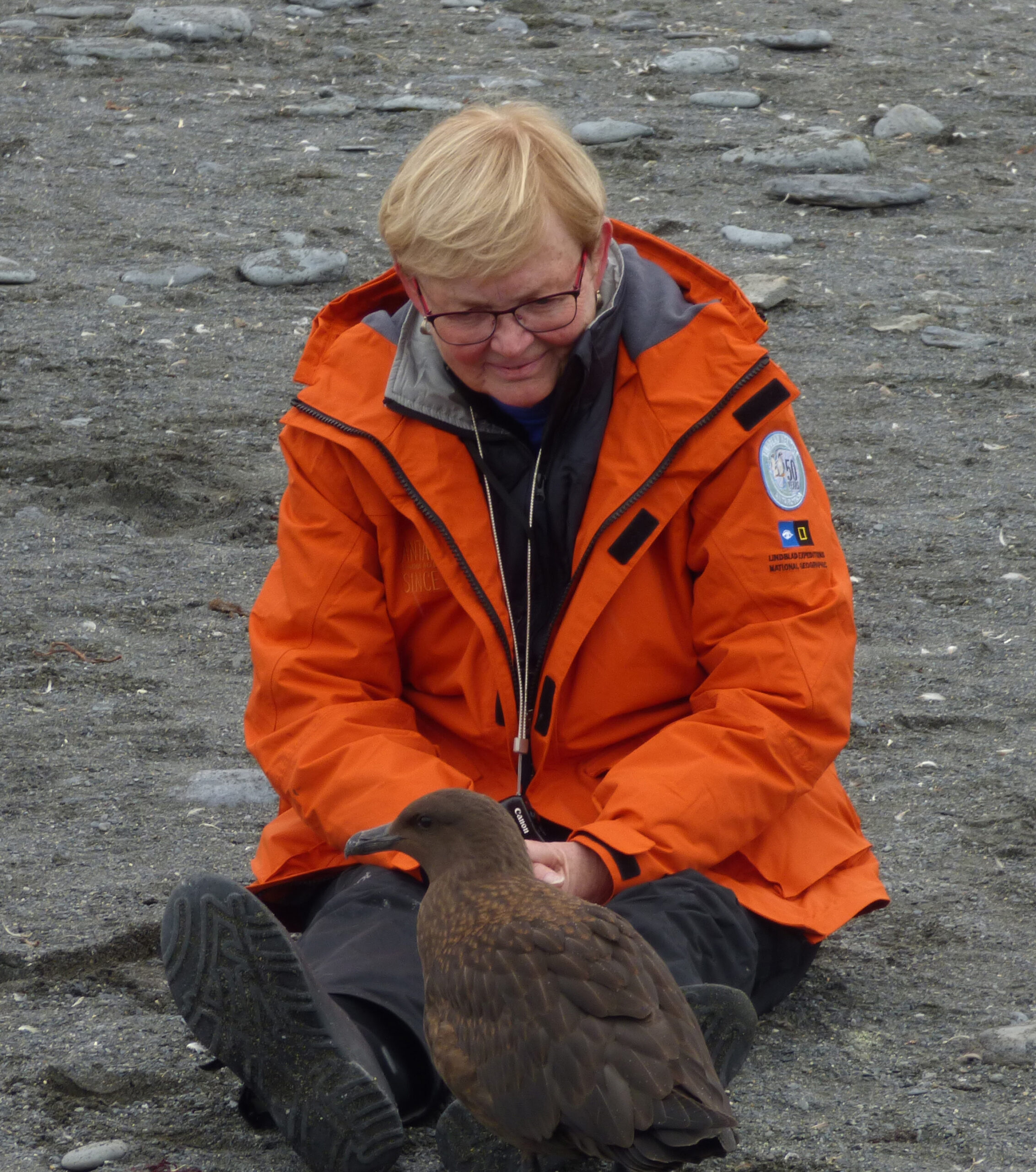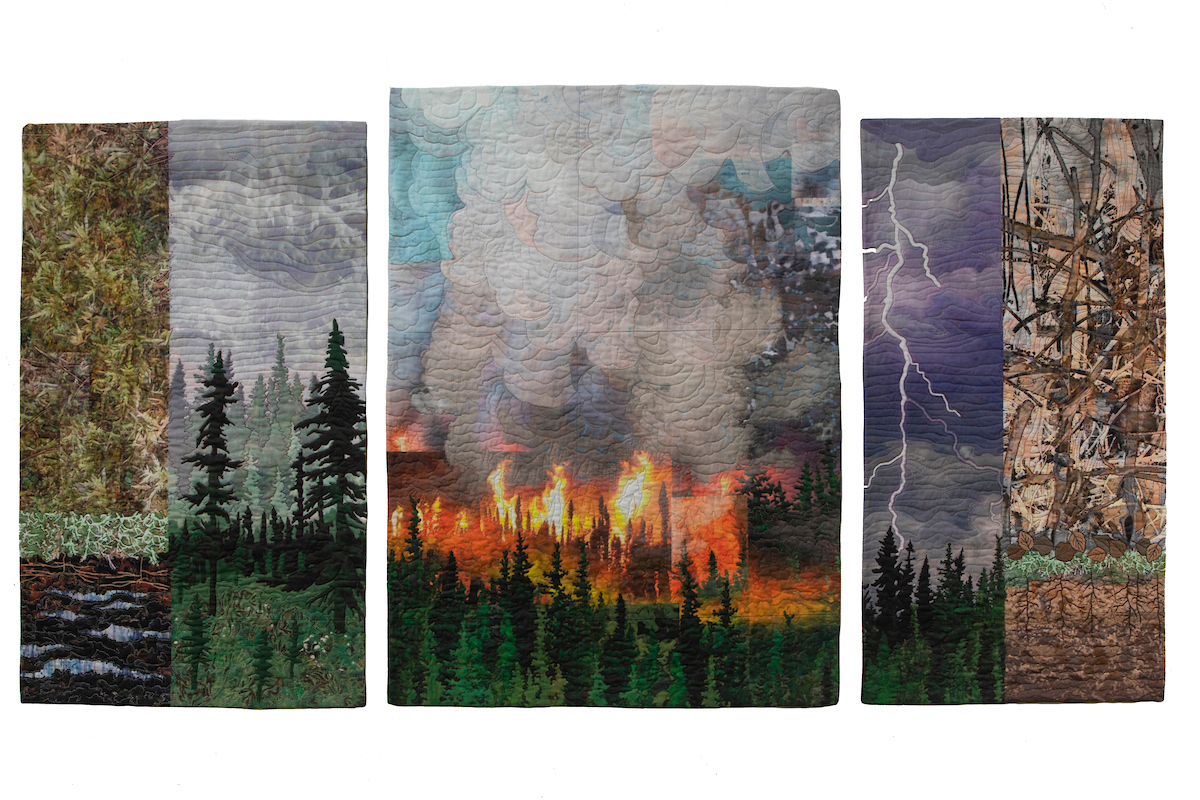Ree Nancarrow and Charlotte Bird

Boreal Forest Roulette
Succession occurs constantly in the boreal forest. With the increasing temperatures of climate change, wildfire plays a much more dominant role in creating opportunities for succession. After a wildland fire, factors that impact successions include location, soil chemistry, moisture content of soil, existing plant communities, duff depth and spread, weather/lightning and human activity.
Boreal Forest Roulette, a collaboration of Ree Nancarrow and Charlotte Bird, focuses on fire: the conditions of wildland fires and the outcomes after a fire. Jill Johnstone, adjunct professor at UAF, was their first scientist collaborator. Her presentation to the ITOC group, her articles about fire succession, and her classification key system game for identifying climax outcomes, gave them their focus on fire. Joan Foote, retired USFS botanist, spent many hours on walks sharing her wealth of knowledge about the boreal forest and succession following fire.
Ree Nancarrow’s three quilts depict some of the existing conditions in the boreal forest when fire strikes. Charlotte Bird’s four book structures track stories of how combinations of variable factors lead to different climax community outcomes.
Ree worked with Tamara Harms and Xanthe Walker in developing sections of the images for her quilts. She manipulated drawings, collages, and textures on an IPad to create images for fabric that became heavily stitched whole cloth quilts. From left to right, the stories are black spruce forest growing on cold soil underlain with permafrost, fire spreading through the boreal forest unchecked, and areas of boreal forest with exposed mineral soil, no permafrost, deciduous trees, and lightning-induced fires.
Charlotte used Jill Johnstone’s game to show variables that can change climax community development over time. Each of her four books illustrate early post fire situations based on fire severity, some of the variables acting on succession over shifting periods of years, and the climax community. They are: return to black spruce forest, mixed black spruce and deciduous forest, deciduous forest, and open grassland. The collaged panels include hand dyed and commercial fabrics, various commercial and exotic papers, birch bark, photo transfer, and glue stiffened canvas.
Ree Nancarrow
Ree Nancarrow graduated from the Univ. of MN with a BS in Education in 1963, lived near Denali Natl. Park, AK, for 50 years and currently lives in Fbks, AK. She was a DNP Artist-in-Residence, has won awards in many national shows, and has had ten solo shows. Major commissions include a quilt for the U.S. Army, Fort Wainwright Bassett Hospital, Fairbanks AK, and a four-panel quilt for Eielson Visitor’s Center, Denali N. P., AK. She received an Interior AK Mayor’s Award for Lifetime Achievement in the Arts in 2012. She was a Rasmuson Individual Artists Grant recipient in 2020.
Website: reenancarrow.com

Charlotte Bird
For over 35 years Charlotte Bird has created primarily textile-based artwork, exploring a variety of art forms, including artist books, art quilts, and collage. While she lives in San Diego, CA, Charlotte travels regularly to Alaska for wilderness and inspiration. She was Artist in Residence in Denali National Park in 2014 and has collaborated with Ree Nancarrow in three ITOC projects. Her work is in public and private collections throughout the United States including the University of Alaska Fairbanks Museum of the North permanent collection and the Institute of Arctic Biology, Fairbanks, AK. More information at: birdworks-fiberarts.com
Website: birdworks-fiberarts.com


